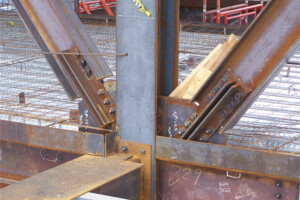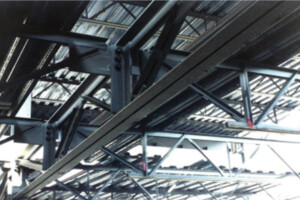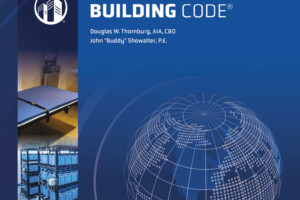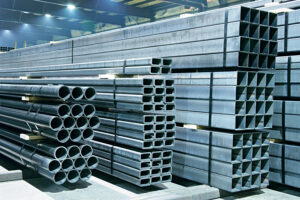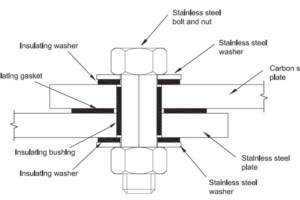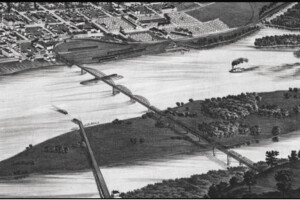Strategies for successful delegated design in structural steel.
…Review Category : Articles
What does legal advice about contracts have in common with cockroaches and Twinkies?
…Let’s all agree to identify and remove obstacles
Over the past few months, I have written about employment in the structural engineering profession. The first article in the February 2023 issue dealt with the apparent shortage of structural engineers, including an analysis of the potential causes. I concluded that engineers are just as responsible for the situation as anyone or anything else. The second article in the July issue dealt with leadership and mentorship. Again, I stated that we can be our worst enemies but that there is an opportunity for improvement.
…Steel joists with flush framed end connections enhance floor vibration properties.
Recent floor vibration measurements and research completed by Vulcraft have shown that flush frame joist end connections can have a significant positive impact on a floor’s vibrational response when subjected to walking excitation. This article shows how the frequency and effective mass of the floor bay can be changed dramatically when switching from traditional bearing seats to flush frame connections developed by Vulcraft. Manual calculation procedures found in the American Institute of Steel Construction (AISC) Design Guide 11, 2nd Edition, Vibrations of Steel-Framed Structural Systems Due to Human Activity and the Steel Joist Institute’s (SJI) Technical Digest 5, Vibration of Steel Joist – Concrete Slab Floors (hereafter referred to AISC DG11 and SJI TD5) currently do not address steel joists with flush end connections. This article demonstrates how the provisions in AISC DG11 and SJI TD5 can be used for flush frame connections.
…Early in my college career I recall taking several required arts and science courses and certain required elective courses. A specific memory comes to mind regarding a book report the class was assigned midway through the semester in which I had to write an expository essay. I must have done an awesome job on the essay as I received an “A.”
…Roof assemblies (Chapter 15)—Part 1.
This multi-part series discusses significant structural changes to the 2024 International Building Code (IBC) by the International Code Council (ICC). Part 1 includes an overview of changes to Chapter 15 on roof assemblies. Only a portion of the chapter’s total number of code changes are discussed in this article. More information on the code changes can be found in the 2024 Significant Changes to the International Building Code, available from ICC (Figure 1).
…Checking the availability of HSS sections is easy with the Steel Tube Institute’s Capability Tool.
If you have ever opened the steel manual to find section properties for a steel HSS (hollow structural section) member, you may have been surprised by how many sizes of HSS are listed. There are hundreds of options for round, rectangular, and square tubes. Some of these sections are readily available, others are produced on demand, and some may not be available in the current market. Realizing this, the Steel Tube Institute (STI), an industry organization supported by domestic steel tube producers, has created a free Capability Tool as a resource to search which HSS sections are currently domestically produced, by whom, and whether the sections are regularly produced or produced on demand. At steeltubeinstitute.org/capability-tool, there are search fields for shape, dimension range, and grade. Three ASTM (American Society for Testing and Materials) HSS material grades are included: A500, A1085, and A1065; and one for mechanical tubing, A513. Once these fields are filled, a list of producers who provide that shape, either regularly or on demand, is generated.
…Design rules for bearing-type and slip-critical bolted connections made of stainless steel are now available.
In the December 2022 edition of Structure Magazine, Benjamin Baer gave an overview of the new AISC design specification for structural stainless steel, ANSI/AISC 370, and introduced the provisions for designing members. This article focuses on the design of bolted connections in structural stainless steel.
…One of America’s greatest bridges, carrying the heaviest traffic in Northern California.
The San Francisco–Oakland Bay Bridge (henceforth, Bay Bridge), completed November 12, 1936, during the Great Depression, remains one of the world’s greatest bridges. Together with its neighbor, the Golden Gate Bridge, it represents the culmination of more than 100 years of bridge engineering development in the US. After its opening, the bridge, which connects San Francisco and Oakland, soon became known as the “workhorse of Northern California,” carrying the heaviest traffic in the region. As part of Interstate 80, it remains the busiest traffic link in Northern California carrying on its two decks up to 280,000–300,000 vehicles per day, or more than 13,000 per peak hour.
…Winona bridge, Minnesota/Wisconsin 1871.
The Winona and St. Peter Railroad (originally the Transit Railroad Company) was founded in 1862 and planned to run westerly from Winona on the Mississippi River to St. Peter, about 125 miles away, reaching that point in 1871. From there, it reached Watertown, South Dakota, in 1873. In 1867, it was purchased by the Chicago and North Western Railway that was chartered on June 7, 1859, and from Chicago, it reached the Mississippi at a point in Wisconsin east of Winona, Minnesota, in 1873. It continued its route north to St. Paul, connecting with the Northern Pacific Railroad heading for the West Coast at Puget Sound. However, a bridge connecting the two lines, now under the control of the Chicago and North Western Railway, was needed. After a five-year battle, approval was given to build the bridge in accordance with the 1866 federal law prescribing the requirements for a low-level and a high-level bridge as described for the Quincy and other bridges. Section 8 of the July 25, 1866 Act stated,
…
